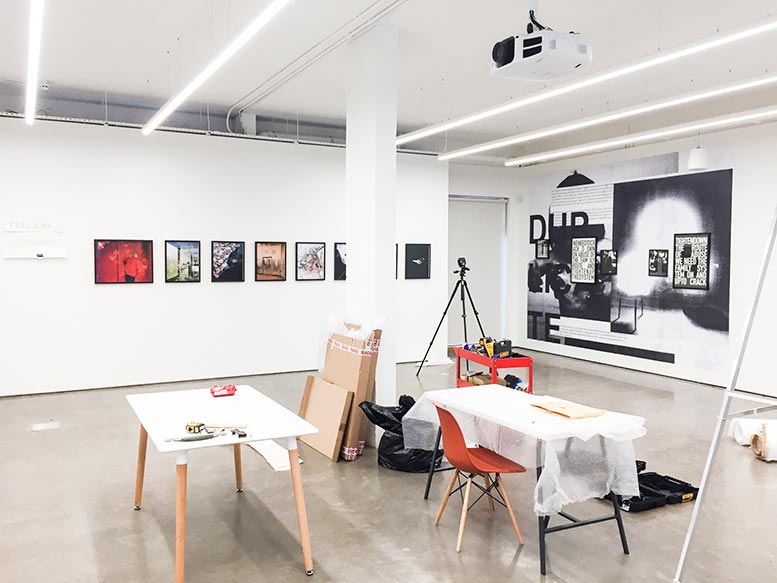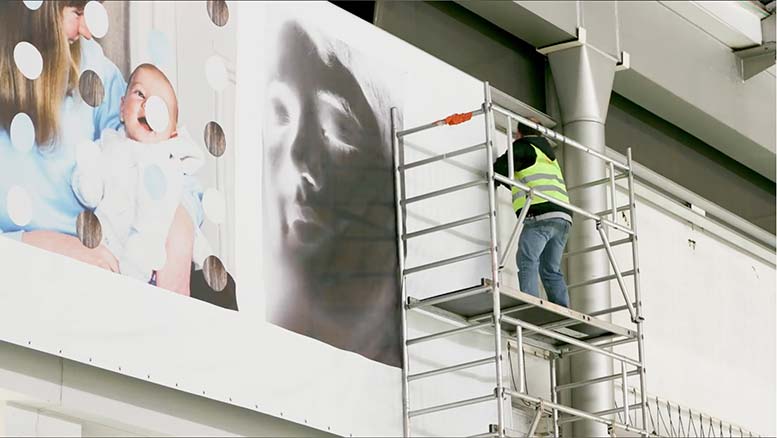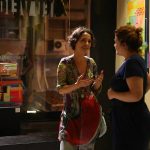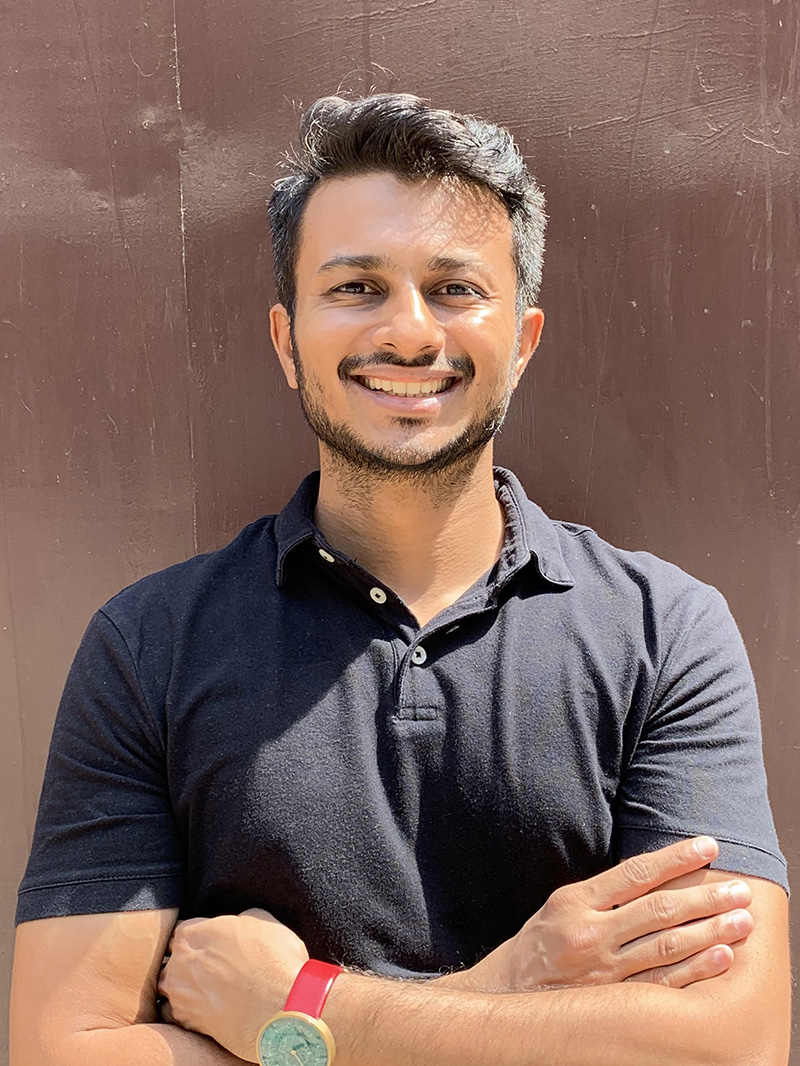Contemporary artist Samuel Fordham discusses the conceptual difficulties and uncertainty of creating art, in an interview with Anjali Singh for the Asian Curator
“Having the option of doing anything and everything is paradoxically very restrictive for (most) artists. The trick is to understand the largest question within your practice; that question that you feel in your stomach, and then mine it. The world is infinitely varied that you can spend your entire career working towards the answer.“
Contemporary artist Samuel Fordham

Artist interview
Tell us about your own personal evolution, vis a vis your journey with the work you do today.
I started working as a theatrical artist from a young age, initially training as an actor before spending a number of years working as a musician. Performance, process and theatricality has definitely had a large influence on how I think about making work. My photographic beginnings lie in motion pictures and narrative fiction before moving across to encompass still imagery also. I think this large foundation of artistic disciplines is very healthy for an artist to have.
Bertolt Brecht’s notion of Verfremdung interested me, while I was training as an actor. The arts share parallels; the way that the work is experienced by the viewer. Understanding these can be very freeing. Thinking about theory from one discipline and applying it to another can have strong results. I have since used processes of alienation in my latest work C-R92/BY, though within a photographic framework. Similarly, there are techniques from Documentary Theatre, such as the use of verbatim, that I am using in a new film work.

“My practice tends to work in cycles of research, production and dissemination.“
Contemporary artist Samuel Fordham
Contemporary artist Samuel Fordham on the conceptual difficulty and uncertainty of creating new work.
I think this is a very common problem, especially for those at the start of their training as an artist. Having the option of doing anything and everything is paradoxically very restrictive for (most) artists. The trick is to understand the largest question within your practice; that question that you feel in your stomach, and then mine it. The world is infinitely varied that you can spend your entire career working towards the answer. Of course the secondary and tertiary questions will change, but the source will keep giving.
What were you working on when the lockdown was announced?
My practice tends to work in cycles of research, production and dissemination. When lockdown was announced, I was at the end of a dissemination phase and gearing up for some research, which can be an extensive period.

How has this affected your practice and plans?
Alongside art I also practice as an educator, teaching photography and filmmaking in Bristol at boomsatsuma, a post-16 arts provider. As an organisation we decided (as we were equipped) to launch into the pandemic with energy, so the majority of the period saw me making videos and resources, running online seminars, critiques and tutorials, with little time left for my research. The end of lockdown saw the birth of my first son, and it has been a dream to spend so much time with him during the early days. Now the lockdown is lifted. I’m back in the studio and moving towards a couple of new works.
What would elevate artists’ life during this period?
I find educating oneself to be the most rewarding and inspiring action to take. Investing time into other peoples work is a very healthy activity. I love it when other people’s work surprises or wrong-foots me. When you’re knocked off balance, that feeling is what I’m looking for in my own work. That said, if you had the fortune to spend time with loved ones, there’s really nothing better.

How does your interaction with a curator or gallery evolve from the initial interface, to the working relationship?
It’s been less than a year since I have graduated, so the latter part of your question may need some time for the change to be seen. What I can say though is that the curators I have worked with have been incredibly generous and respectful from our initial meetings. I hope to stay in contact, the beauty (much like all relationships) will be if we grow in similar ways or directions.
How do your audience and the market interact and react to your work.
On the whole it has been very positive. My recent work C-R92/BY was the opening project to Fisheye Magazine’s Photo Review 20.21, an extensive look at the photographic landscape of the previous year ) and It’s Nice That have done a great article, as well as a feature in The British Journal of Photography. That’s not to say that there has only been praise. Some audiences found the variety of visual strategies in my work too difficult to connect with, whilst others have seen it as refreshing. The work has been placed in the Government Art Collection, which is the first acquisition of my work by a major public collection.

What are you looking for while (re)viewing art for your own collection? Which shows, performances and experiences have shaped your own creative process? Who are your maestros?
My collection currently only consists of photographs I have received as gifts from other artists. As I continue I hope to build this gradually. I’m looking for that feeling I spoke of earlier, the one that hits you in the gut. There have been many occasions this has happened when viewing a contemporaries work, but sadly the work was not to be mine! In honesty though, I actually like to keep my walls clear, I have other artists work in my mind all the time, so it is important for me to have some visual downtime.
You have spent a lot of time amongst artists in flow. Tell us your observations.
I think it is a really special moment and one that makes us human. You do a lot of work around free flow at acting school, to follow your instincts and let your unconscious take over. You need a lot of bravery to really trust yourself. We teach ourselves that we are safe when our mind is in control, but in art I think the body needs to come first.
For enquiries contact: hello@samuelwjfordham.com
Before you go – you might like to browse our Artist Interviews. Interviews of artists and outliers on how to be an artist. Contemporary artists on the source of their creative inspiration.












Add Comment